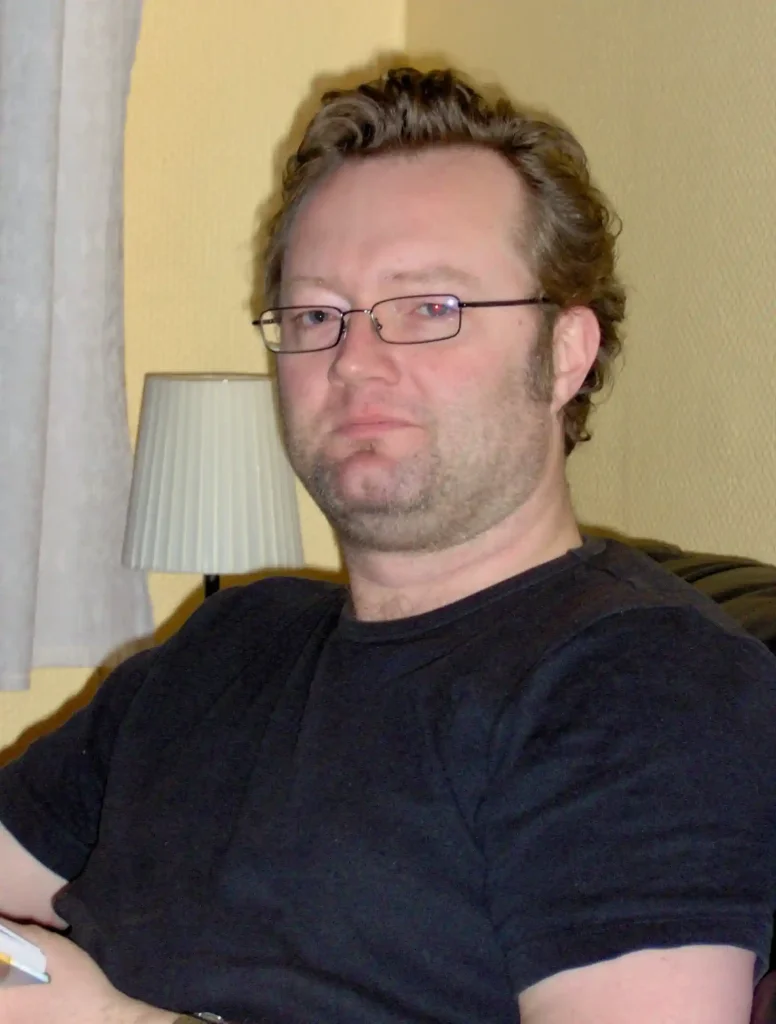Anxiety and depression: something you FEEL, not what you ARE.
Anxiety and depression are things you feel, not something you are.
A mental health problem is something you suffer from. It’s not you or your personality or character.
In my article Leaving anxiety and depression behind: how to get started, advice #1 and #2 out of 40 were:
- Acknowledge your problem. You can’t fix something you don’t admit exists.
- Understand the difference between ‘having a problem’ and ‘being a problem’.
Both are an essential part of the preparation for leaving your anxiety or depression behind. Essential doesn’t necessarily mean easy, though. Acknowledging your problem might be hard, primarily because of the shame still associated with perfectly normal mental health challenges.
However, understanding the difference between ‘having a problem’ and ‘being a problem’ will be even worse for many of us.
(Featured image: Pointing out the dark clouds, AI-generated illustration.)
We aren’t used to differentiating between what we feel and who we are.
And that’s not strange at all.
Let’s say I hit my thumb with a hammer and fractured a bone. That would be rather painful. However, I can identify the source of the pain. I can look at my thumb and say, “There it is. Bloody thumb! How could I be so clumsy?”
My thumb would hurt. I couldn’t deny this pain is a part of me. But I would never think the pain is me. It doesn’t define who I am.
Anyone who has suffered from anxiety or depression knows that’s quite different.
Incarcerating emotions
How we speak betrays how we look at this.
We say, “I am anxious. I am depressed.” Anxiety and depression aren’t something we feel, apparently. They’re something we are.
Again, this is not too strange. We can’t point at anxiety or depression and say, “That’s where it hurts!” Because these feelings totally fill our minds. We get lost and trapped in there without an emergency exit.
Instead of the pain being an identifiable part of us, it feels more like we are a part of the pain. The anxiety or depression becomes the element we’re made of and our environment. It defines who we are.
However, this isn’t the truth. And there are ways to point an accusing finger at anxiety and depression and say, “There it is!”. Let me tell you how I came to this conclusion.

My flirt with religions
After I finally acknowledged my problem at forty years old, it still took me years to understand the distinction between what I felt and who I was. How did this happen?
Well, I was ‘shopping around’ in the fields of spirituality and religion, trying to find a quick and easy solution to my problems. By then, they were well-acknowledged but still about to wear me down. So, I was on a search through shelf-fulls of books about Christianity, Islam, Judaism, Taoism, Hinduism, Buddhism, you name it.
How nice wouldn’t it be if I could just open an old and sacred scripture and suddenly find the answer to every question, right?
That’s not how it works in real life. At least not if you’re not inclined to surrender unconditionally to someone’s ready-made solutions. And I’m not. Not if you need to understand instead of just accept. And I do.
However, there are things to be learned wherever you are and whatever you do. And I learned a lot from:
My only serious flirtation
The only religion that resonated with me on some levels during my search was Buddhism. This is probably because the original inner core of Buddhism, if you strip away the religious tinsel and baubles hung on it later, isn’t a huge pill of beliefs you must swallow whole. It’s more of a philosophy, a way of understanding yourself and your condition.
Yes, it’s old (2,500 years), but the human mind has remained basically unchanged over that time.
Anyway, what’s relevant here and now is that my ‘Buddhist period’ introduced me to the concept of meditation. I say ‘concept of’ because I’m still not an adept meditator. However, an essential part of beginner-level Buddhist meditation is to watch your thoughts and emotions come and go without judging them.
What a revelation!
I mean, if I could watch my worried thoughts come and go, if I could notice my anxiety ebb and flow, then those things were something observable, something I could mentally point out and separate from me, at least for a while.
So, if I can observe something emerge, change, and disappear, this ‘something’ can’t be identical to me, the observer. It might be a part of me as a fractured thumb would be, but it isn’t the definition of what I am.
Yes, it was a massive revelation, but the detour through a stack of ancient religions was unnecessary (but still interesting). Modern mindfulness and cognitive behavioural therapy (CBT) offer alternative paths to the same destination. But I’ve not always been known to choose the easiest path.

Anyway:
What’s the point of all of this?
Why do I urge you to understand the difference between ‘having a problem’ and ‘being the problem’?
If you tell yourself, “I am anxious (or depressed)”, what are you really saying?
- This is how and who you are. This is you.
- Which means there is little you can do about it.
But what if you say, “I feel anxious (or depressed)”?
- Yes, this is how you feel right now.
- Most likely, you haven’t always felt this way.
- This means there is a possibility you’ll stop feeling this way.
- This feeling is something you (at least sometimes) can identify.
- Which means there’s something you can start working on and potentially fix.
Do you see the difference?
The difference is hope!
Distinguishing between your problem and yourself gives you reason to hope. Without hope, the journey out of anxiety and depression is impossible.
However, with a bit of hope, even if it’s tiny, you might have precisely what you need to take the first small step in the right direction.
And one of your steps should be to stop thinking, “I am anxious/depressed.” Replace it with “I feel anxious/depressed right now.” The change may seem small, but it might make a massive difference.














Post Comment
You must be logged in to post a comment.